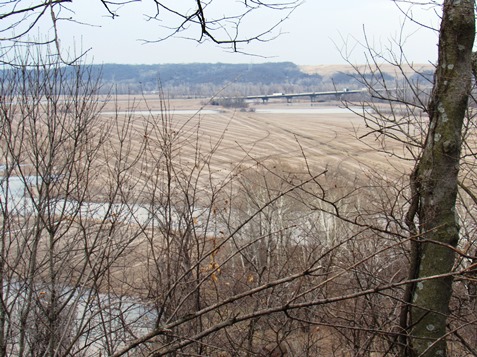Wyandotte County came in again at No. 99 on the County Health Rankings list in Kansas published by the Robert Wood Johnson Foundation and the University of Wisconsin Population Health Institute.
The list has Johnson County as the healthiest in the state, and Chautauqua County as the least healthy. Wyandotte County was No. 99 last year, and it has raised its ranking from even lower in some previous years.
The County Health Rankings are not just about physical health. They also include factors such as crime rates, education levels, incomes, children living in poverty, and housing.
“The County Health Rankings have demonstrated that some counties in Kansas have consistently enjoyed better health, while others have consistently struggled, and we see this once again in 2019,” said Dr. Gianfranco Pezzino, senior fellow with the Kansas Health Institute, in a news release. “However, we also know that there are longstanding inequities in health within counties. Even in counties that have historically enjoyed higher overall rankings, we see substantial differences in health — by race, by ethnicity, and by neighborhood. So, it is important to look beyond what is happening at just the county level.”
According to the 2019 rankings, the five healthiest counties in Kansas, starting with the most healthy, are Johnson County, followed by Nemaha County, Pottawatomie County, Wabaunsee County, and Riley County. The five counties in the poorest health, starting with the least healthy, are Chautauqua County, Labette County, Greenwood County, Wyandotte County, and Montgomery County.
“It can be disappointing to see a low ranking, but it is important to keep a couple characteristics of the Rankings in mind,” stated Terry Brecheisen, director of the Public Health Department of the Unified Government of Wyandotte County-Kansas City, Kansas. “First, is that the County Health Rankings do not change dramatically year-to-year. They are based on over 30 factors that influence health such as employment, access to care, community safety, poverty and educational attainment. These factors, and therefore Rankings, change slowly,” Brecheisen said in the statement.
“Secondly, is that any improvements in the Rankings reflect work that was done at least 3-5 years ago, because the data sets used to compile the Rankings are 3-5 years old,” he said.
The rankings showed Wyandotte County at 87th in length of life, 102nd in quality of life, 102nd in health factors, 94th in clinical care, 102nd in social and economic factors, and 91st in physical environment.
Wyandotte County adults had higher rates of smoking, at 23 percent, than the national average of 14 percent and the Kansas average of 17 percent, according to the study.
Wyandotte County has taken several actions in recent years, including more restrictions on the smoking age, and has funded several health initiatives. The Unified Government also has been involved in efforts to provide fresh foods in “food deserts” within the county.
Adult obesity was at 39 percent in Wyandotte County, compared to 26 percent in the nation and 33 percent in Kansas.
About 21 percent of the Wyandotte County residents were in poor or fair health, according to the study, as compared to 12 percent nationally or 15 percent in Kansas.
According to the study, 75 percent of Wyandotte County residents were high school graduates, as compared to 96 percent nationally and 87 percent in Kansas. The graduation rate has improved in recent years here.
Twenty-five percent of the children in Wyandotte County were in poverty, as compared to 11 percent nationwide and 15 percent in Kansas, according to the study.
Violent crime was reported as 704 per 100,000 in Wyandotte County, as compared to 57 nationally and 73 in Kansas.
The rankings are online at www.countyhealthrankings.org.
Response from Terry Brecheisen, Unified Government (Wyandotte County) Health Director:
“According to the tenth annual County Health Rankings & Roadmaps released March 19, 2019, Wyandotte County ranked 99th out of 102 Kansas counties for “health outcomes” which represent measures of how long people live and how healthy they feel. This ranking is unchanged from last year, when the County was ranked 99 out of 103. There are 105 counties in Kansas, and a few counties are always unranked each year because of insufficient data. The Rankings are available at www.countyhealthrankings.org where individualized county data is provided.
“It can be disappointing to see a low ranking, but it is important to keep a couple characteristics of the Rankings in mind,” states Terry Brecheisen, Director of the Public Health Department of the Unified Government of Wyandotte County/Kansas City, KS (UGPHD). “First, is that the County Health Rankings do not change dramatically year-to-year. They are based on over 30 factors that influence health such as employment, access to care, community safety, poverty and educational attainment. These factors, and therefore Rankings, change slowly,” said Brecheisen. “Secondly, is that any improvements in the Rankings reflect work that was done at least 3-5 years ago, because the data sets used to compile the Rankings are 3-5 years old.”
“Our Ranking compared to other counties has not changed, but what is important is that we are assessing year-over-year comparisons within our county,” explained Brecheisen. “When we do that, we see reasons for both encouragement and concern. Several important measures of Wyandotte County residents’ health are trending positively: Alcohol-related driving deaths, the teen birth rate, the ratio of primary care physicians to population, the high school graduation rate, and unemployment are all going in the right direction,” Brecheisen said. “Other measures have trended negatively. These include the adult obesity rate, rate of sexually transmitted infections, and rate of children in poverty. These should be explored, and may be cause for expanding community-based change efforts.”
“A relatively new feature of the County Health Rankings is the ability, on some measures, to examine the disparities in health status between Black, White, and Hispanic populations. “Better access to care is only part of the solution,” states Brecheisen. “There are dramatic disparities between racial groups for median household income and children living in poverty.” According to data reported in the Rankings, 18% of White children in Wyandotte County are living in poverty, compared to 34% of Hispanic children and 42% of Black children. “Wyandotte County has a proud heritage of having multi-ethnic and multi-cultural communities within its borders,” states Brecheisen. “The goal is to achieve health equity for all residents, defined as attainment of the highest level of health for all people.”
“Good work is being accomplished by employees at the Public Health Department and our community partners,” Brecheisen said. “We are all working hard to improve the health of our Wyandotte County residents. Health Department employees are experts in their fields, and I encourage those interested to look at the Health Department’s website (www.wycokck.org/health) to find contacts for leaders who can explain more about specific measures found in the Rankings.”
“Additionally, initiatives like Healthy Communities Wyandotte (www.hcwyco.org) continue to organize efforts to reduce the burden of tobacco use, improve the built environment to make physical activity easier, and work with local and state policymakers to pass laws that improve public health,” Brecheisen explains. “The “UGPHD also coordinates the Fetal Infant Mortality Review (FIMR) program which deeply studies and responds to the causes of infant mortality, and Cradle Kansas City has emerged to respond to this issue as well.”
“In 2017-2018 the UGPHD along with community partners conducted a Community Health Assessment and then launched a 2018-2023 Community Health Improvement Plan (CHIP). It expands and aligns work by the UGPHD and community partners in the areas of: Violence Prevention, Access to Healthcare, Jobs and Education, and Safe and Affordable Housing (www.wycokck.org/health/plan.aspx).
“These initiatives help broaden and deepen our collective work on those things that determine the health of our community,” states Brecheisen. “Working together, focusing on root causes of poor health for all groups, and the causes of health inequities between groups, will help all people in Wyandotte County attain the highest level of health. We look forward to a healthier future for our county and residents.”




